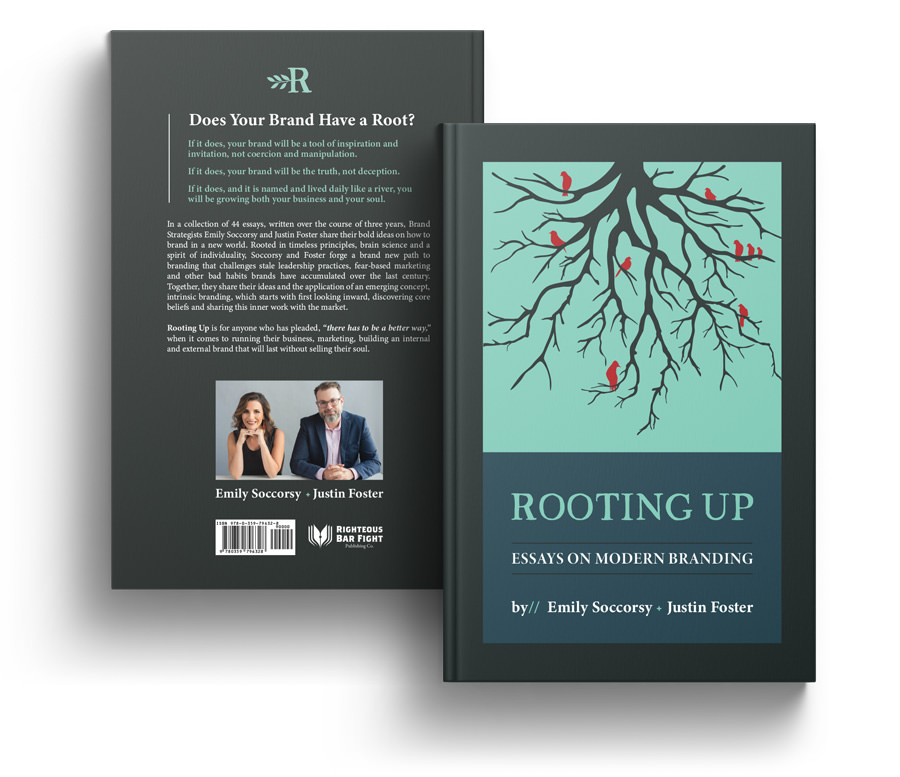Filed Under: Humanistic Marketing, Intrinsic Branding, Leadership
By Jocelyn Lovelle
Vulnerability. It didn’t used to be something we talked about, especially not in professional circles. Now, authentic leaders, leadership teams, and organizations strive to cultivate vulnerability.
But is there a limit to how vulnerable we should be? And if so, what is it and how do we know?
PROTECTING A RESOURCE
While we hear a lot about individuals, teams, and organizations needing to be more vulnerable, vulnerability is something best experienced in small doses, in safe spaces. It’s a powerful resource, that when protected and cared for, can yield long-lasting and profound results.
Overspending it can leave us (and those with whom we are being vulnerable) emotionally, mentally, and physically exhausted. Underspending it creates the barriers we’re trying to break down.
The key to protecting this resource, so we can tap into it consciously, carefully, and sustainably, is learning to practice ways of showing up that can lead to vulnerable connections, spaces in which others can step in and see themselves, practice empathy, and build trust with us.

And it’s important for us to recognize the value in both offering these doorways to connection and knowing when to hold back our vulnerability, when it’s better to be less vulnerable than more. Because there is a balance to be struck. If we are too vulnerable, we can become exhausted and it can be hard for others to respond in kind. If we are not vulnerable enough, it is hard for people to connect deeply with us. In balance, practicing vulnerability leads to personal insights, greater empathy, and deep resilience.
FOUR BEHAVIORS THAT HELP US EXPERIENCE VULNERABILITY
When we use the term vulnerability, we are often referring not to experiencing the state of being vulnerable itself, but to specific behaviors that create the opportunity for us to share something vulnerable and others to respond to that state of vulnerability.
Here are four of the top behaviors we can cultivate to access spaces in which vulnerability can thrive, while creating resiliency and keeping that resource protected.
Authenticity: Drawing others out and understanding ourselves.
Sharing foibles, successes, fallibility, fears, and love can be a great invitation to others to do the same–and to be more fully integrated with ourselves.
Empathy: Helping others feel seen or heard.
When we share our own challenges, struggles, and stumbling blocks, and listen to understand others’ challenges and struggles, we help them feel seen and heard, we become approachable, and we invite connection.
Transparency: Bringing a group or team together.
Transparency, along with honesty and taking responsibility, fosters strength, resilience, kinship, and feelings of safety in teams and groups.
Humility: Lifting others up.
Sharing credit and successes is a powerful foundational tool in creating spaces where others feel empowered and safe in bringing more of themselves to the table.
DISCERNMENT LEADS TO RESILIENCE
When we share ourselves through behaviors that invite vulnerability, we reveal who we are, while creating a sustainable vulnerability practice. Others are able to see and experience our beliefs and standards in action, and they have the opportunity to connect with us on a deeper level, potentially responding with their own vulnerability-building behaviors.
By consciously protecting how, and how much we offer our own vulnerability to others, we create a sustainable practice that allows us to share, model, and hold space for others, so that we can create deep wells of connection that don’t run dry.
